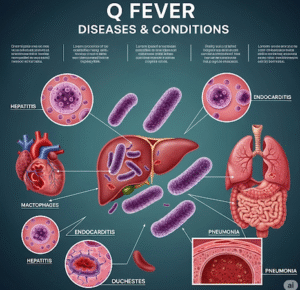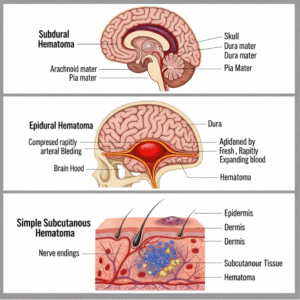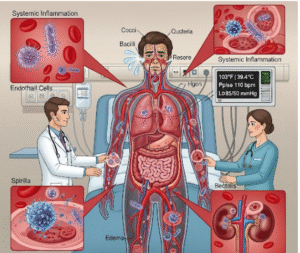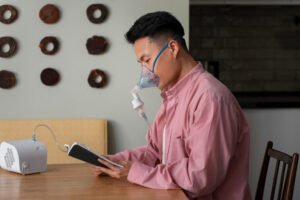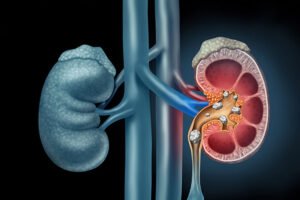Overview
Acquired von Willebrand Disease (AvWD) is a rare bleeding disorder that mimics the symptoms of inherited von Willebrand disease (vWD) but develops later in life due to underlying medical conditions or medications. It results in a deficiency or dysfunction of von Willebrand factor (vWF), a protein essential for blood clotting.
Unlike congenital vWD, AvWD is not inherited genetically and often resolves when the underlying cause is treated. Early diagnosis and management are essential to prevent excessive bleeding, especially during surgery or trauma.
What is Acquired von Willebrand Disease?
Acquired von Willebrand Disease is a non-genetic bleeding disorder that arises due to an acquired reduction in von Willebrand factor (vWF) levels or function. vWF is responsible for helping blood platelets stick to damaged blood vessel walls and for stabilizing clotting factor VIII.
In AvWD, due to autoimmune responses, diseases, or medication effects, this clotting mechanism is impaired, leading to prolonged or excessive bleeding episodes.
Symptoms
Symptoms of Acquired von Willebrand Disease resemble those of the inherited form but appear in adulthood. Common signs include:
- Frequent nosebleeds (epistaxis)
- Easy bruising
- Excessive bleeding from minor cuts or dental procedures
- Heavy or prolonged menstrual bleeding (in women)
- Gastrointestinal bleeding
- Blood in urine or stool
- Prolonged bleeding after surgery or trauma
- Joint or muscle bleeding (less common)
Causes
AvWD is most often associated with other diseases or medical conditions that interfere with vWF production, increase its destruction, or remove it from the bloodstream.
Common causes include:
- Lymphoproliferative disorders:
- Multiple myeloma
- Lymphoma
- Chronic lymphocytic leukemia (CLL)
- Myeloproliferative disorders:
- Essential thrombocythemia
- Polycythemia vera
- Cardiovascular diseases:
- Aortic stenosis (Heyde’s syndrome)
- Ventricular assist devices (mechanical disruption)
- Autoimmune diseases:
- Systemic lupus erythematosus (SLE)
- Antiphospholipid syndrome
- Hypothyroidism
- Medications:
- Valproic acid
- Hydroxyethyl starch (used in IV fluids)
Risk Factors
Individuals at higher risk for AvWD include:
- Adults over 40 with no bleeding history but new symptoms
- Patients with autoimmune disorders
- Those diagnosed with lymphoid or myeloid cancers
- Individuals with cardiovascular abnormalities or mechanical heart devices
- Patients undergoing chronic dialysis
- People on specific medications that affect clotting proteins
Complications
If untreated, AvWD can lead to serious and even life-threatening complications:
- Severe internal bleeding
- Hemorrhage after surgery or childbirth
- Joint and muscle bleeding
- Chronic anemia due to blood loss
- Gastrointestinal bleeding requiring transfusions
- Increased risk during dental work or trauma
Prevention
There is no direct way to prevent AvWD, but early detection and management of the underlying condition can significantly reduce complications:
- Regular monitoring in patients with known risk conditions (e.g., myeloma, SLE)
- Avoidance of unnecessary medications that impair clotting
- Routine blood work to detect abnormal bleeding parameters
- Pre-surgical screening in high-risk individuals
- Managing cardiovascular and autoimmune diseases effectively
Treatment Options Korea
1. Treat the Underlying Condition
- Common causes: lymphoproliferative disorders, autoimmune diseases, cardiovascular issues, or hypothyroidism
- Managing or resolving the primary illness can often improve AvWD symptoms
2. Desmopressin (DDAVP)
- Stimulates release of von Willebrand factor (vWF)
- Effective in some cases depending on vWF clearance rate
- Used cautiously under specialist supervision
3. vWF-Containing Factor VIII Concentrates
- Plasma-derived or recombinant vWF products (e.g., Haemate P, Wilate)
- Administered for bleeding episodes or before surgery
- Widely available in tertiary care centers in Korea
4. Intravenous Immunoglobulin (IVIG)
- Particularly useful in autoimmune-related AvWD
- Helps reduce clearance of vWF by neutralizing autoantibodies
- Given in specialized hematology units
5. Antifibrinolytic Agents
- Tranexamic acid or aminocaproic acid
- Used to prevent or treat mucosal bleeding (e.g., nosebleeds, dental procedures)
6. Platelet Transfusion
- Used in emergency bleeding situations or when other therapies fail
- Provides temporary improvement in vWF levels


